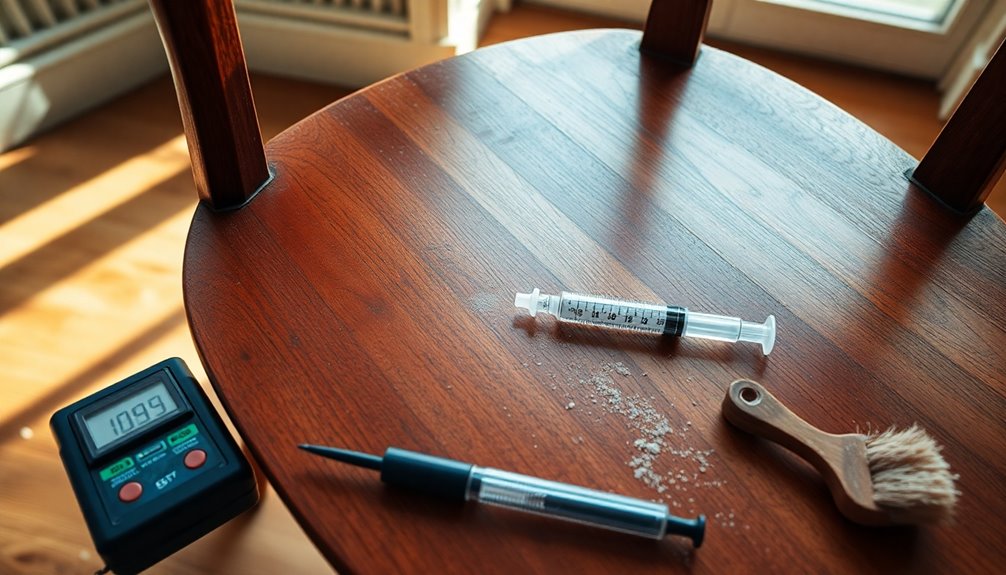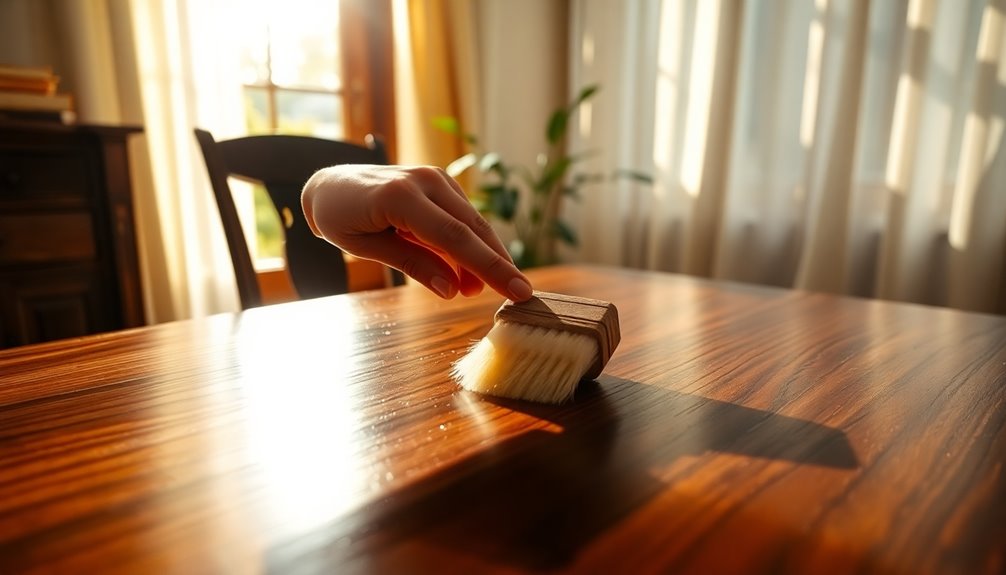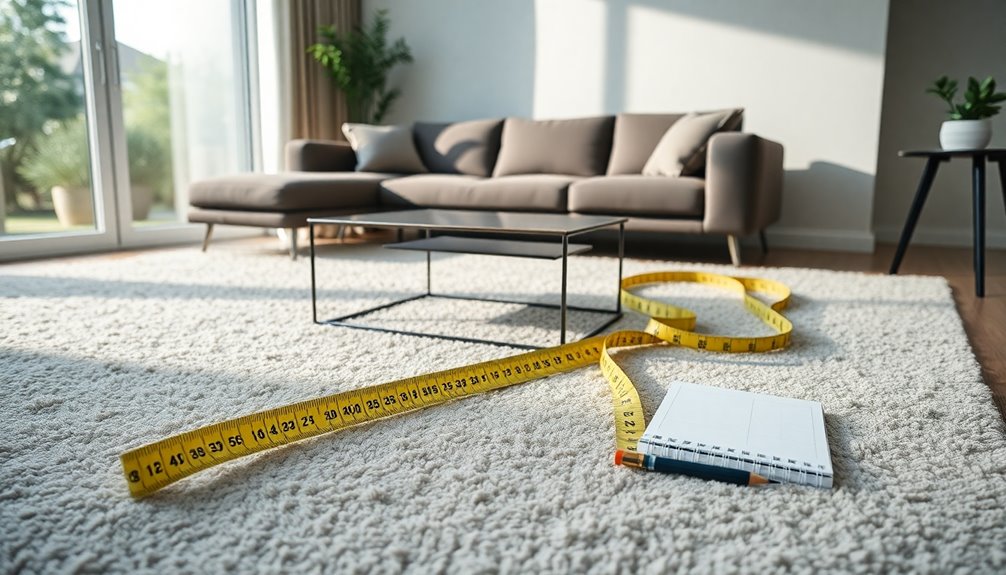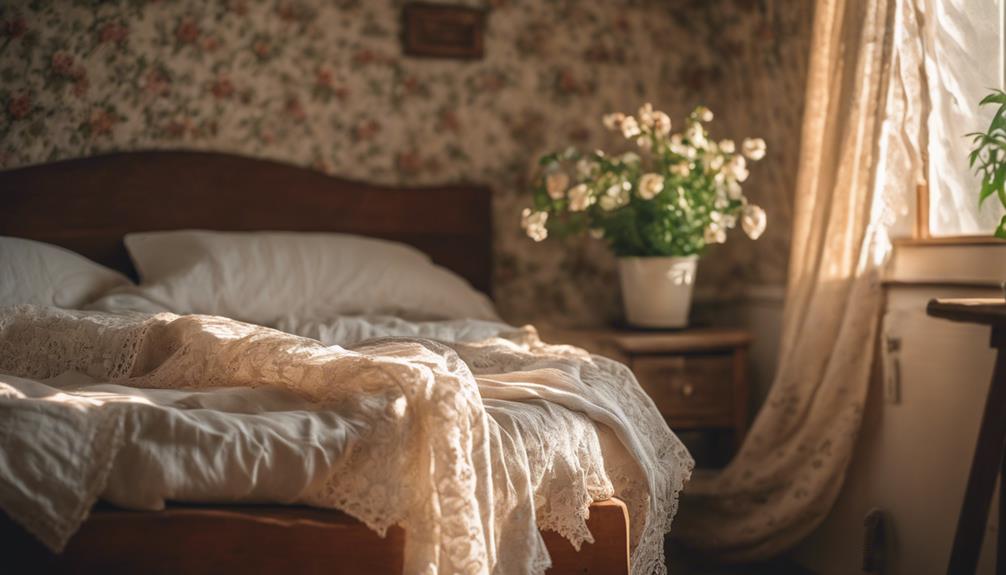To get rid of termites in your furniture, start by inspecting for signs like holes, cracks, and a hollow sound when you tap. You can treat minor infestations with heat treatment, borate solutions, or DIY remedies like vinegar and orange oil. Consider professional pest control for severe cases, which may require fumigation or liquid termiticides. Prevent future infestations by keeping your furniture dry, using termite-resistant products, and maintaining distance from soil. Regular inspections help catch problems early. If you're curious about more treatment options and preventative measures, there's plenty more to explore.
Key Takeaways
- Conduct a thorough visual inspection of furniture for signs of termite damage, such as holes, frass, and hollow sounds.
- Use DIY remedies like vinegar and lemon juice or orange oil to kill termites on contact.
- Apply borate-based treatments to disrupt the digestive system of termites when ingested.
- Consider professional pest control services for effective chemical treatments and baiting systems.
- Maintain furniture dryness and elevate it to prevent moisture attraction, reducing the risk of termite infestations.
Signs of Termite Infestation
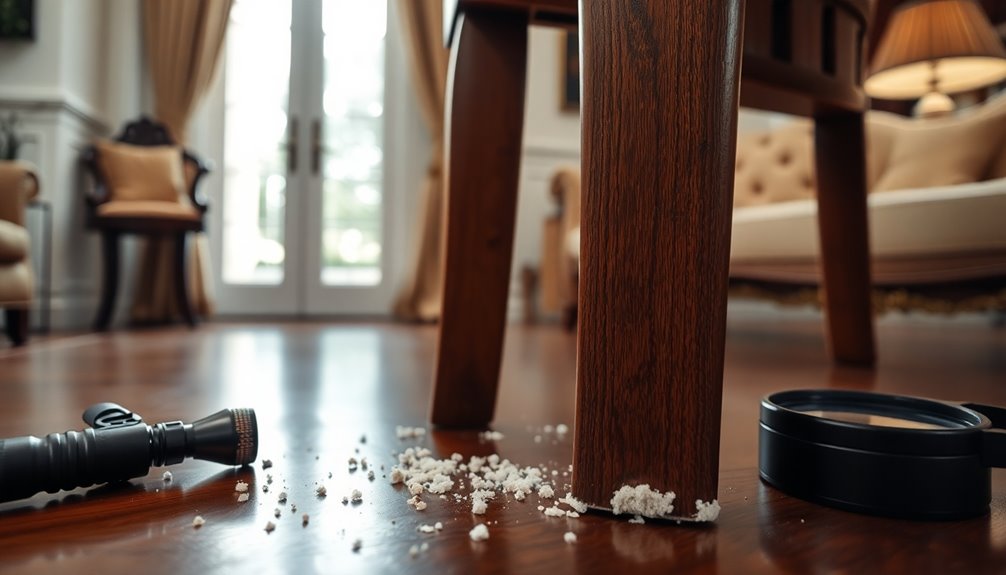
When you suspect termites might be invading your furniture, it's crucial to recognize the signs of infestation early. Pay attention to any visible damage, like cracks, holes, or chipped areas on the surface. If you tap on your furniture and hear a hollow sound, that's a red flag. Rippled or uneven surfaces and tiny pinholes are also indicators of termite activity.
Additionally, look for termite droppings and debris. You might find small mounds of frass, which resemble dark powder or light coffee grounds, beneath your furniture. Check for piles of light- to golden-brown fecal pellets and fine wood particles, which signal that termites are at work. Termites prefer humid environments, making damp areas around your furniture particularly vulnerable to infestation.
You should also be aware of any unusual smells. A foul odor from your furniture could point to a termite issue, especially if you notice chipping wooden polish or mud tubes around the furniture. These tubes, often found in dark, moist areas, indicate subterranean termites.
Finally, inspect the structural integrity of your furniture. Weakness, small tunnels, or piles of sawdust beneath the furniture all suggest that termites have made themselves at home. Recognizing these signs early can help you take action before the damage worsens.
Detection Methods
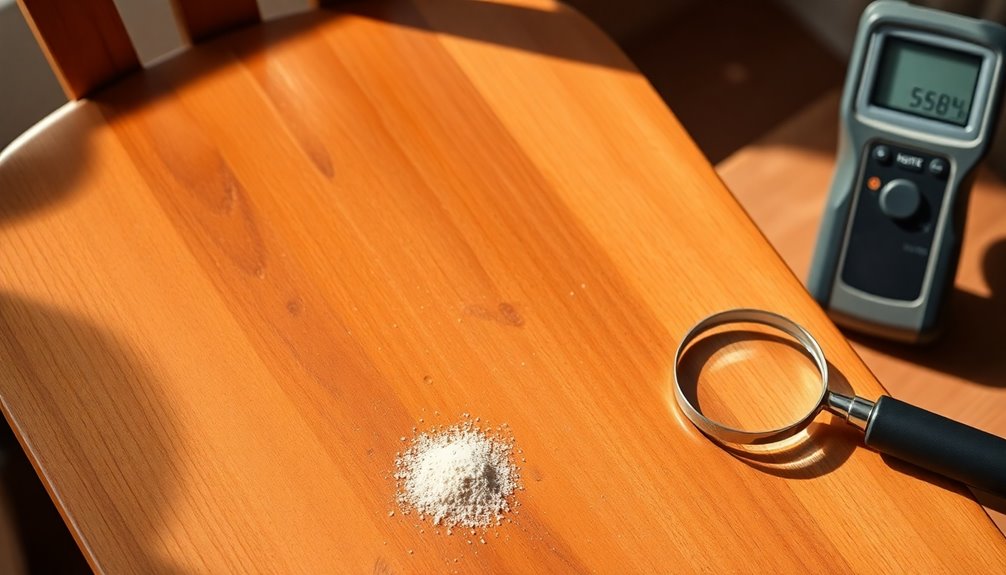
Detecting termites in your furniture requires a proactive approach to ensure early intervention and minimize damage. Start with thorough visual inspections of all accessible areas, including crawl spaces, attics, and wooden structures. Look for signs like mud tubes, wood damage, holes in the woodwork, and termite droppings. Pay attention to the support structures and dry wood areas for any activity.
You can also use specialized equipment to enhance your detection efforts. Moisture meters help identify areas with excess moisture that attract termites. Thermal imaging cameras reveal temperature variations, indicating hidden termite activity. Acoustic devices can pick up sounds or vibrations, suggesting termites are present within the wood. Tapping the furniture can help you hear hollow sounds, which might indicate infestations. Additionally, employing advanced detection technologies such as the Termatrac device can enhance your ability to track pest movement and presence effectively.
For advanced detection, consider piezoelectric sensors or the Termatrac device, which detects pest movement and presence. Non-invasive methods, like trained dogs, can sniff out methane emitted by termites. Radar-based systems can assess active movement and wood decay quickly. By using these methods, you'll improve your chances of catching termites early and protecting your furniture.
Heat Treatment

Utilizing heat treatment is an effective way to eliminate termites from your furniture without resorting to harsh chemicals. This method targets all types of termites, including subterranean, drywood, and Formosan varieties, making it a comprehensive solution. To begin, you'll need to remove appliances and belongings from the area. Then, seal the structure to control the internal temperature.
Heat sensors and large hoses will distribute hot air, ensuring you maintain a temperature of 130-150°F externally and 120°F internally for at least 35 minutes. After treatment, simply unseal the area and remove the probes and hoses. It's essential to conduct a pre-treatment inspection to identify the type of termite and assess any wood damage. Additionally, be aware that drywood termite droppings may indicate an infestation that requires attention.
Keep in mind that while heat treatment is non-toxic and environmentally friendly, it may not be suitable for items with plastics that could distort. Additionally, dense wood structures on concrete or tile may be harder to heat effectively. Overall, this method requires less preparation compared to fumigation, and you only need to vacate the area for a few hours, making it a convenient option for termite elimination.
Chemical Procedures
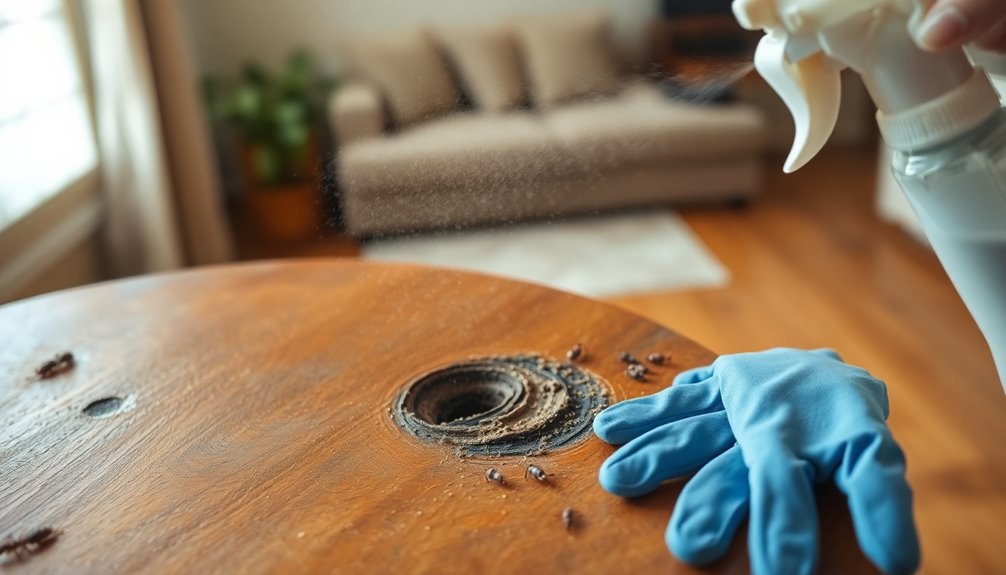
After exploring heat treatment as a viable option for termite removal, it’s important to consider chemical procedures that can also effectively target infestations in your furniture. Liquid termiticides can be directly applied to infested areas, particularly in cracks and joints. You can spray or paint these onto unfinished wood, or even foam them into voids for deeper penetration. Just remember, periodic reapplication may be necessary for long-term protection. Additionally, regular inspections for signs of infestation can help you identify any new termite activity before it escalates. Before proceeding with chemical procedures, it’s crucial to understand how to disassemble a sofa, as accessing hidden areas can significantly enhance the effectiveness of treatment. By carefully removing cushions and fabric, you can uncover potential hiding spots for termites and ensure that the liquid termiticides reach deep into the structure. Furthermore, taking proactive measures by sealing cracks and crevices will create an additional barrier against future infestations, maintaining the integrity of your furniture in the long run.
Another effective option is borate-based treatments, like boric acid. This disrupts termites' digestive systems when ingested, leading to their elimination. You can mix it with water and apply it as a spray solution, making it useful for both pre- and post-construction treatments.
If you're looking for a more strategic approach, consider termite baits. These bait stations attract termites with food sources that contain slow-acting ingredients. Workers take the bait back to their colony, gradually killing off the entire population.
For more comprehensive control, professional chemical treatments using products like Termidor® and Premise® are available. Consulting with licensed pest control professionals can help you determine the best treatment plan tailored to your needs.
Fumigation
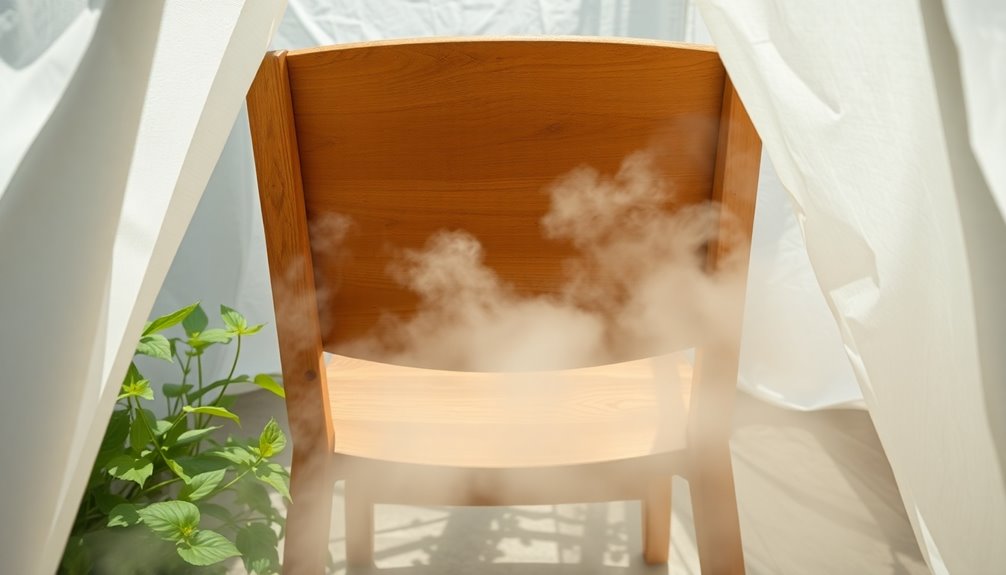
Fumigation can be an effective method for eliminating termites from your furniture, especially when infestations are severe. To start, you'll need to remove the furniture and place it into a sealed container or chamber. An EPA-registered gas, like sulfuryl fluoride, is then introduced to penetrate the furniture and control the termites. This process usually takes several days, depending on your setup and ventilation.
Safety measures are crucial during fumigation. Chloropicrin serves as a warning agent, deterring early or accidental entry due to its irritant effects. The California Aeration Plan (CAP) ensures that proper ventilation is conducted post-fumigation to protect the occupants. Adhering to safety plans, like the California Aeration Plan (CAP), ensures proper ventilation after the process. Gas monitors are used to check sulfuryl fluoride levels before allowing anyone to re-enter the area.
Specialized equipment, such as tents, ducting, and fans, will help contain the fumigant and ensure thorough aeration. After fumigation, you'll need to ventilate the area and confirm that fumigant levels are safe. Additionally, it's wise to clean the furniture by vacuuming and disinfecting to remove dead termites and any residue. Be cautious and discard any exposed food items for safety.
Professional Assistance
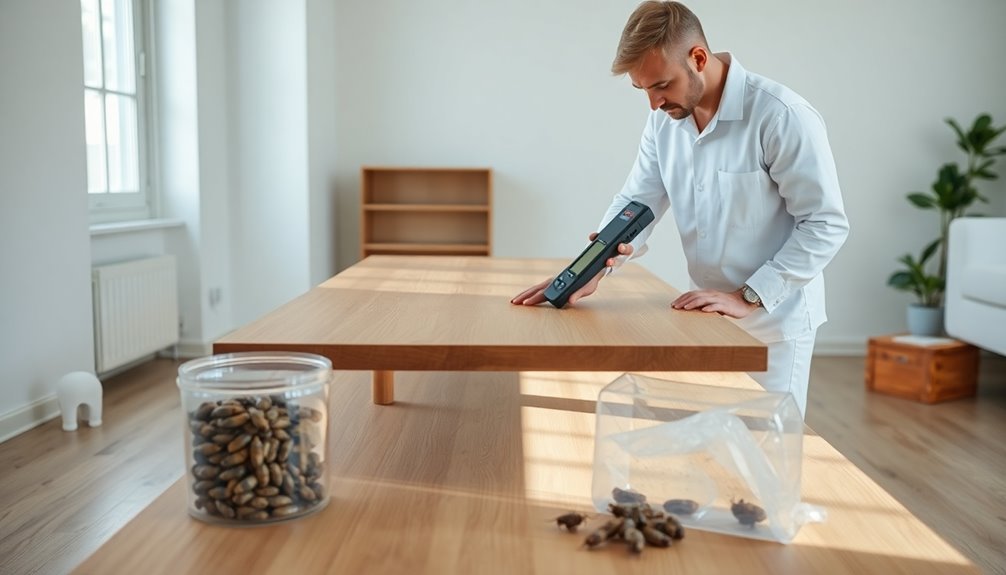
When dealing with a termite infestation in your furniture, seeking professional assistance can be invaluable. Trained inspectors thoroughly examine your furniture and surrounding areas to identify termite activity and determine whether you're facing subterranean or drywood termites. They look for signs like termite pellets, small ridged droppings, and tubes, providing a comprehensive check of your home's extent of infestation.
Many pest control services offer free inspections, which can help you identify the problem early. Based on their findings, professionals recommend the best treatment methods tailored to your situation. They might use direct injection of termiticides into infested wood or apply liquid termiticides around your home to create a protective barrier. Baiting systems can attract termites and spread the termiticide throughout their colony.
Professionals utilize specialized equipment for effective and safe treatment, often combining chemical, physical, and biological methods for long-term solutions. They follow strict safety precautions and use EPA-registered products during treatment. Early detection is crucial to preventing costly damage, making professional evaluations an essential step in addressing infestations. By choosing licensed experts, you ensure that your infestation is handled correctly, minimizing risks and protecting your investment.
Preventive Measures

To effectively prevent termite infestations in your furniture, it's crucial to take proactive measures from the start. Begin by selecting high-quality materials like boiling water resistant (BWR) plywood, or termite-proof plywood. Medium Density Fibreboard (MDF) and High Density Fibreboard (HDF) are also excellent choices, as they're made from hardwood fibers and are naturally resistant to termites.
When designing your furniture, ensure you laminate the insides of wardrobes and drawers for added protection. Use termite-resistant wood polish or sealers and minimize contact with soil and moisture to further deter termites. Additionally, subterranean termites can be identified by their mud tubes, highlighting the need for vigilance in inspections.
Environmental control is key. Keep your wooden furniture off the ground, opting for concrete or tiled flooring instead. Regularly expose your furniture to sunlight to eliminate moisture and potential pests.
Lastly, regular maintenance and inspection are vital. Check for signs of damage, apply termite-resistant treatments periodically, and address any moisture issues immediately. By following these preventive measures, you'll significantly reduce the risk of termite infestations in your furniture.
DIY Termite Remedies
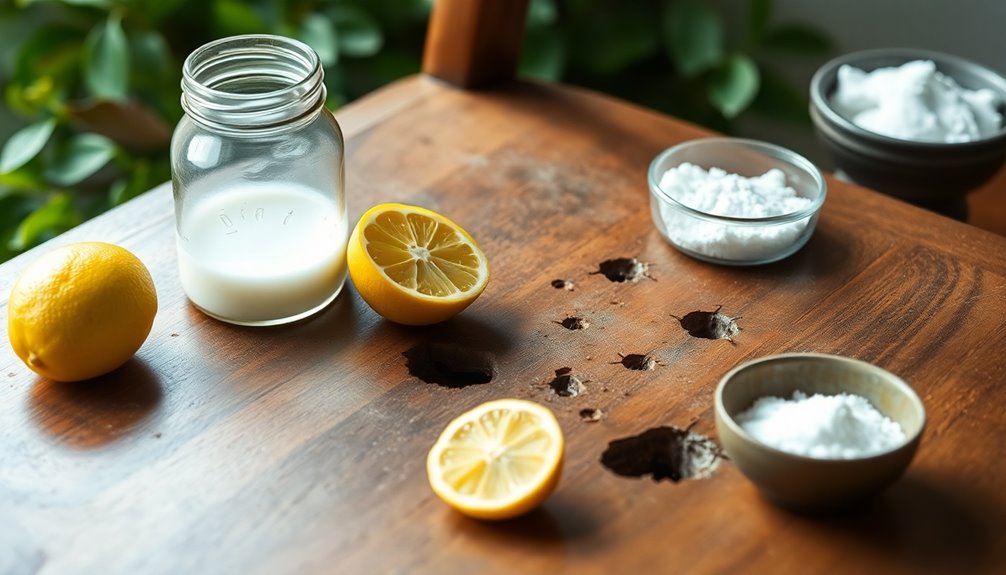
Termite infestations can be a homeowner's nightmare, but there are effective DIY remedies you can try to tackle the problem. One simple method is to mix half a cup of vinegar with the juice of two lemons and spray it on affected areas. This natural solution can kill termites on contact. You can also use orange oil, which contains d-limonene, by spraying it directly onto termites or suspected areas to deter them. Regular application of these natural solutions is recommended for consistent results.
For a more targeted approach, inject neem oil into wooden structures, as it kills termites without harsh chemicals. Another option is clove oil; mix three drops with half a cup of water and spray it on infested areas. Diatomaceous earth works wonders too, damaging termite exoskeletons and dehydrating them.
Consider setting up traps using wet cardboard to lure termites, then discard or burn the traps. You can enhance this method by sprinkling boric acid on the cardboard. Alternatively, introduce parasitic nematodes into termite colonies, as these release bacteria that can decimate the pests. With these DIY remedies, you can effectively combat termites in your furniture.
Maintaining Termite-Free Furniture
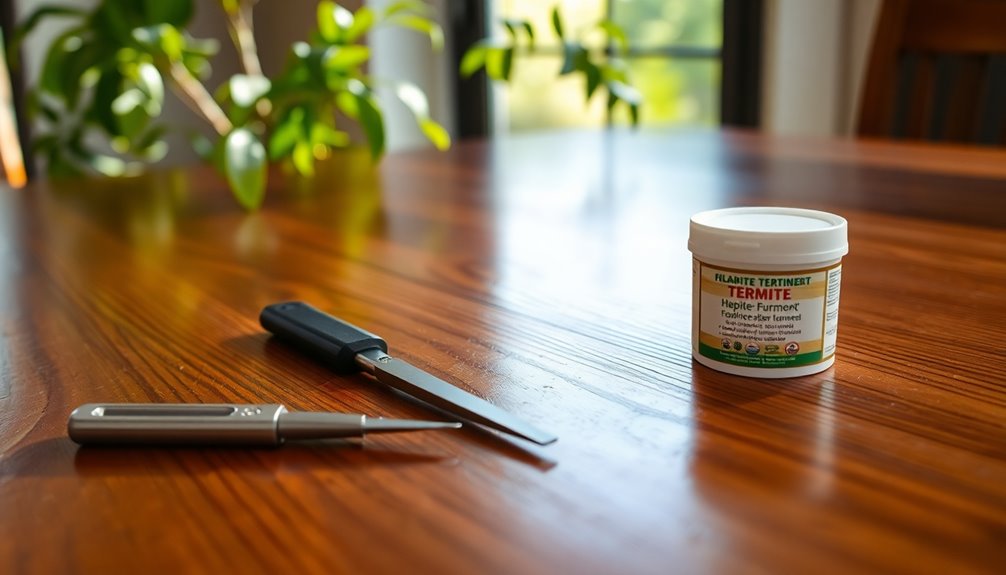
Maintaining termite-free furniture requires a proactive approach to prevention and care. First, keep your furniture dry. Moisture attracts subterranean termites, so avoid storing items in damp areas like crawlspaces or garages. When cleaning, use a dry cloth instead of liquids to prevent moisture buildup. Annually, apply waterproof paint to protect your wooden furniture. Termites eat wood at a rate of five grams per day, which highlights the importance of early detection and prevention.
It's also important to maintain distance from the soil. Ensure at least 18 inches between wooden furniture and the ground. You can create physical barriers using cement or stones to further deter termites. Applying termite-resistant polishes and borate treatments can provide an extra layer of protection.
Keep your environment dry and well-ventilated, as this discourages termite attraction. Regularly inspect your furniture for signs of termite activity, like flying insects or mounds. If you notice anything suspicious, don't hesitate to consult a pest control professional.
Lastly, consider hiring professionals for applying protective coatings and scheduling occasional chemical treatments. By following these guidelines, you'll significantly reduce the risk of termite infestations and maintain the integrity of your furniture for years to come.
Frequently Asked Questions
How Long Does It Take to Eliminate Termites From Furniture?
When eliminating termites, the time it takes varies based on the method you choose. For DIY treatments like boric acid or nematodes, it can take several applications over a few days to weeks. Exposing furniture to sunlight may work in hours, while freezing takes 48 to 72 hours. Professional heat treatments can take a few hours but require careful handling. Fumigation is quick, usually 24 to 48 hours, but it's invasive and requires preparation.
Are There Natural Remedies for Termites That Really Work?
Yes, there are natural remedies for termites that really work! You can use orange oil, which contains d-limonene, to kill termites on contact. Neem oil acts as a growth inhibitor, stopping their reproduction. Clove oil mixed with water creates an effective spray, while cedarwood and tea tree oil naturally repel them. Additionally, garlic and cinnamon's strong aromas serve as a preventive measure. Try these options for a non-toxic approach to termite control!
Can Termites Return After Treatment Is Completed?
Yes, termites can return after treatment is completed. If the wrong treatment's used or if it doesn't penetrate deeply enough, some termites might survive. New colonies can form from swarming termites, and infested items brought into your home can reintroduce them. Regular monitoring, using baits, and applying protective treatments can help prevent reinfestation. If you're unsure, consider seeking professional help to ensure complete elimination and to address any potential risks.
What Types of Furniture Are Most Susceptible to Termites?
When you think about furniture susceptible to termites, complex designs are major culprits. Armchairs and cabinets with multiple overlapping pieces are at high risk. You should also watch out for tables with intricate joints and any furniture with cracks or crevices. Unpainted or degraded paint finishes leave wood vulnerable, and antiques are particularly prone due to their age. Actively used wooden items like beds and chairs can also attract termites.
How Can I Tell if Termites Are in My Walls?
To tell if termites are in your walls, look for thin tunnels or cracks in the drywall, along with tiny exit holes. Bubbling or peeling paint is another sign, as well as a hollow sound when you tap the area. Keep an eye out for termite dust or discarded wings, which indicate activity. If you hear faint clicking sounds or feel odd vibrations, it's time to investigate further.
Conclusion
In conclusion, dealing with termites in your furniture doesn't have to be overwhelming. By recognizing the signs early and using effective methods like heat treatment, chemical procedures, or even DIY remedies, you can reclaim your space. Don't hesitate to call in professionals if needed, and always take preventive measures to keep those pesky pests at bay. With a little effort, you can maintain termite-free furniture and enjoy a safer, more comfortable home.
